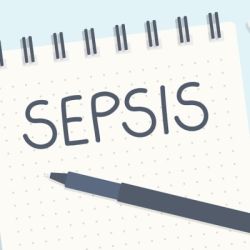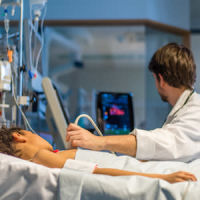This study focuses on the impact of sepsis, a condition resulting from a dysregulated immune response to infection, on the ability of patients to return to work (RTW). Sepsis is a significant global health concern, causing substantial morbidity and mortality. Sepsis survivors commonly experience long-term cognitive and functional impairments, but the effect on their ability to resume work is not well understood.
RTW is considered a crucial measure of long-term functional recovery after disease, including trauma, ARDS, conditions requiring intensive care and organ support. Previous studies have shown that sepsis survivors tend to have worse functional outcomes compared to other intensive care survivors. Recent research on COVID-19 survivors also highlights potential long-term impacts on functioning.
The primary aim of this study was to investigate the RTW proportions of patients admitted with sepsis, including those in intensive care units (ICUs), non-ICUs, and those with COVID-19-related sepsis. The study covers a period from 2010 to 2021, focusing on RTW at 6 months, 1 year, and 2 years post-discharge. The secondary objectives include examining temporal trends in RTW and identifying characteristics associated with sustainable RTW, defined as working for at least 31 consecutive days after hospital discharge following a sepsis episode. The study recognises the need for updated estimates based on the latest sepsis definition (Sepsis-3) to better understand the prognosis and plan appropriate interventions for sepsis survivors who were employed before admission.
The study focused on working-age patients (18–60 years) hospitalised with sepsis in a Norwegian hospital from 2010 to 2021. Patient data, including sick leave records, were obtained from the Norwegian Patient Registry and the National Social Security System Registry. Time trends were analysed for each admission year. Time-to-event analysis, incorporating hazard risk (HR) calculations, explored the associations between sustainable RTW, patient characteristics, and sepsis subgroups (ICU vs. non-ICU and COVID-19 vs. non-COVID-19).
Among 35,839 hospitalisations for sepsis in individuals aged 18–60 years, 12,260 (34.2%) were included in the study. The average age was 43.7 years. At 6 months, 1 year, and 2 years post-discharge, overall estimates indicated that 58.6%, 67.5%, and 63.4% were working. Age-standardised RTW trends for ICU and non-ICU sepsis patients remained stable, except for a 2-year decline in non-ICU patients (1.51% per year). Factors associated with sustainable RTW included younger age, fewer comorbidities, and fewer acute organ dysfunctions. The probability of sustainable RTW was lower in ICU patients (HR 0.56; 95% CI 0.52–0.61) and higher in patients with COVID-19-related sepsis (HR 1.31; 95% CI 1.15–1.49) compared to non-ICU patients and sepsis patients, respectively.
The study reveals a lack of improvement in the proportions of RTW over time for sepsis patients and highlights a low probability of sustainable RTW. The findings underscore the need for attention to these issues and emphasise the importance of further research to enhance outcomes for individuals who have experienced sepsis.
Source: Critical Care
Image Credit: iStock


















